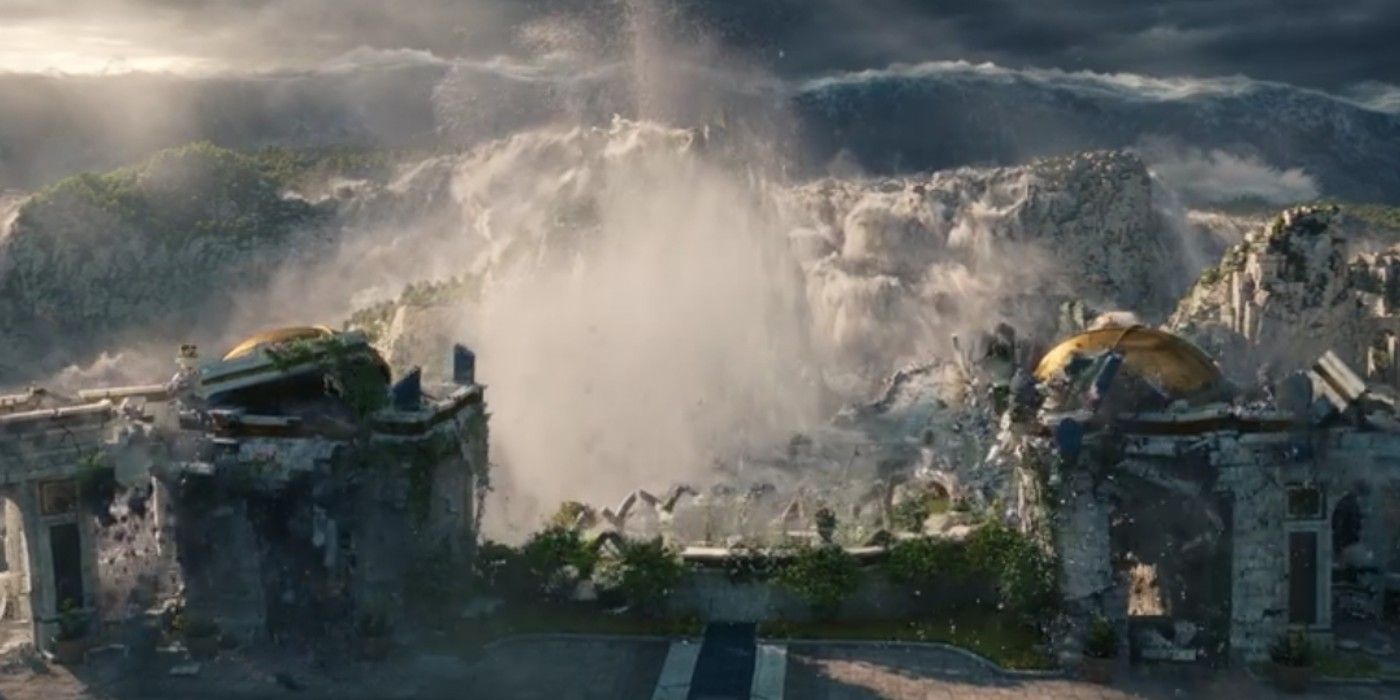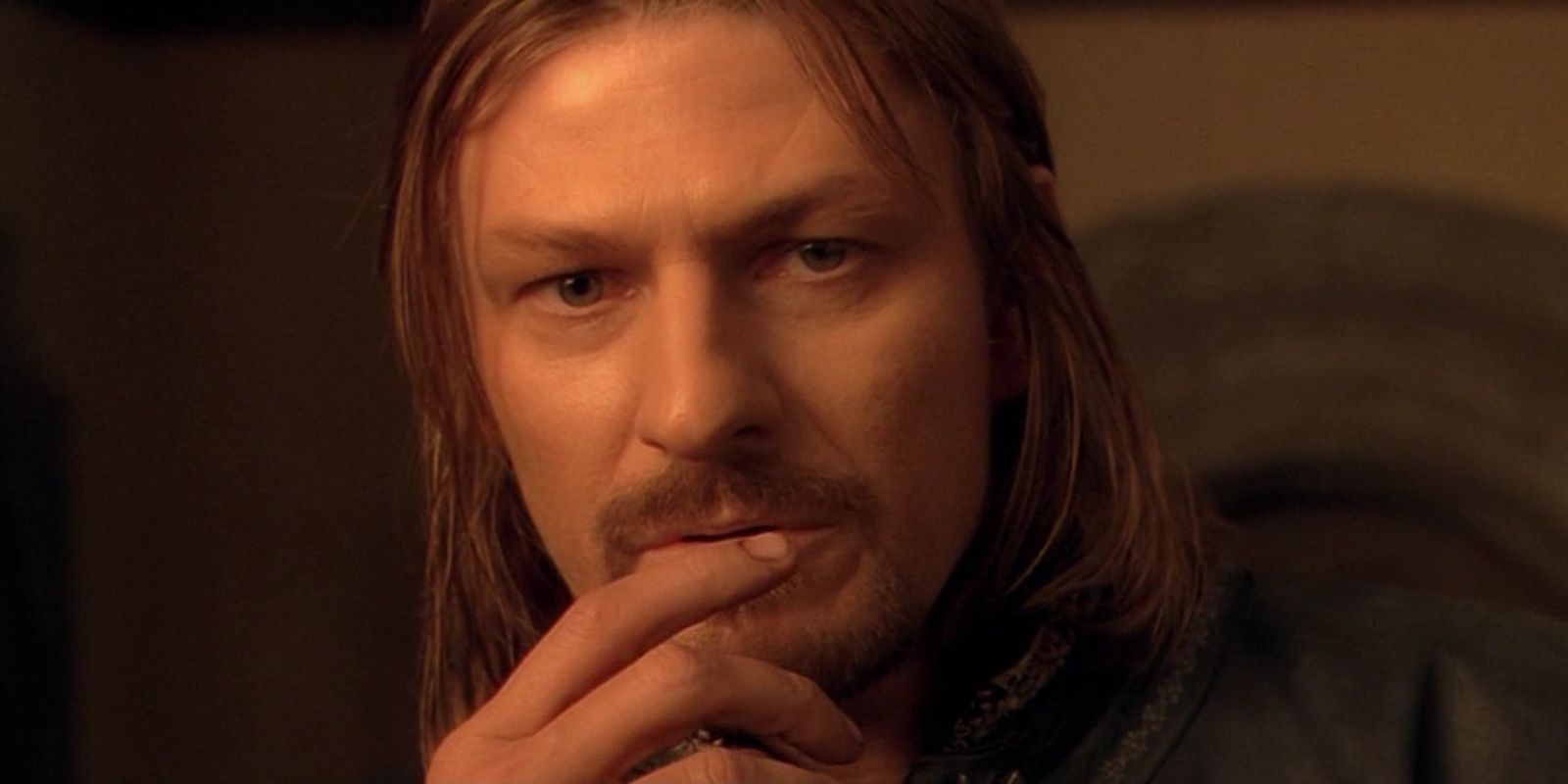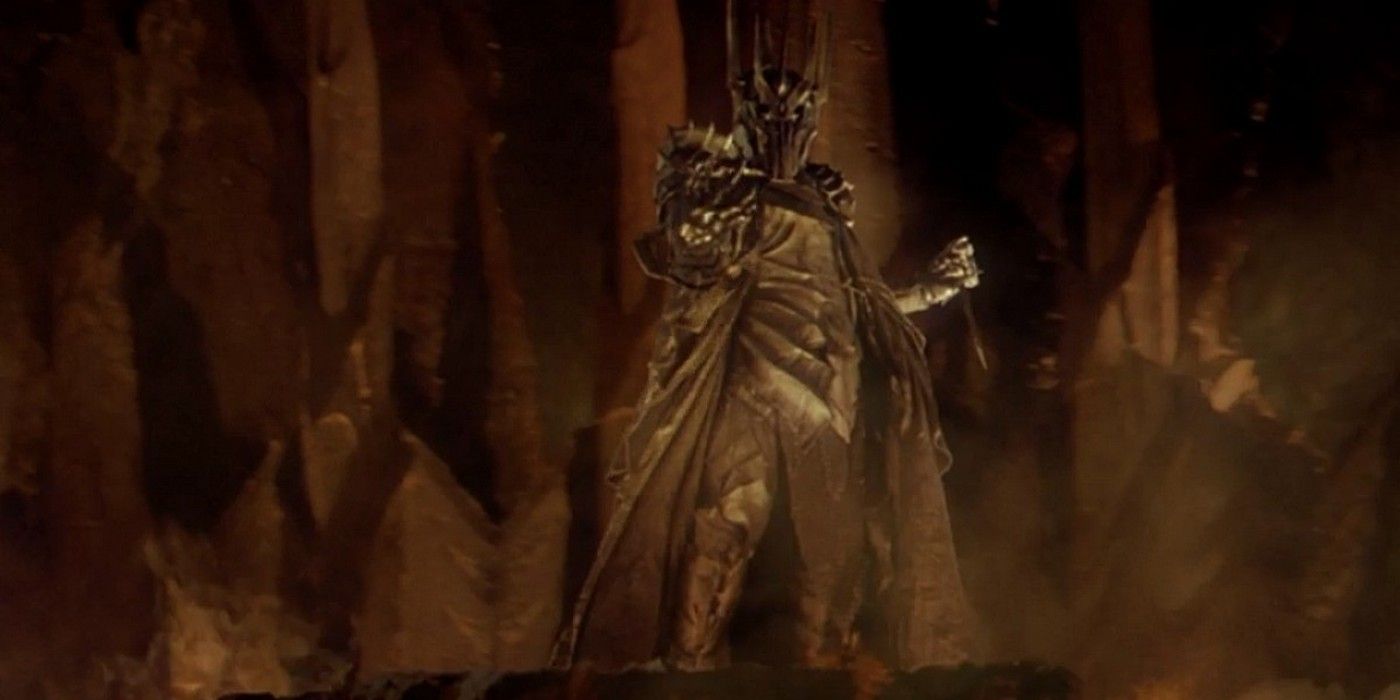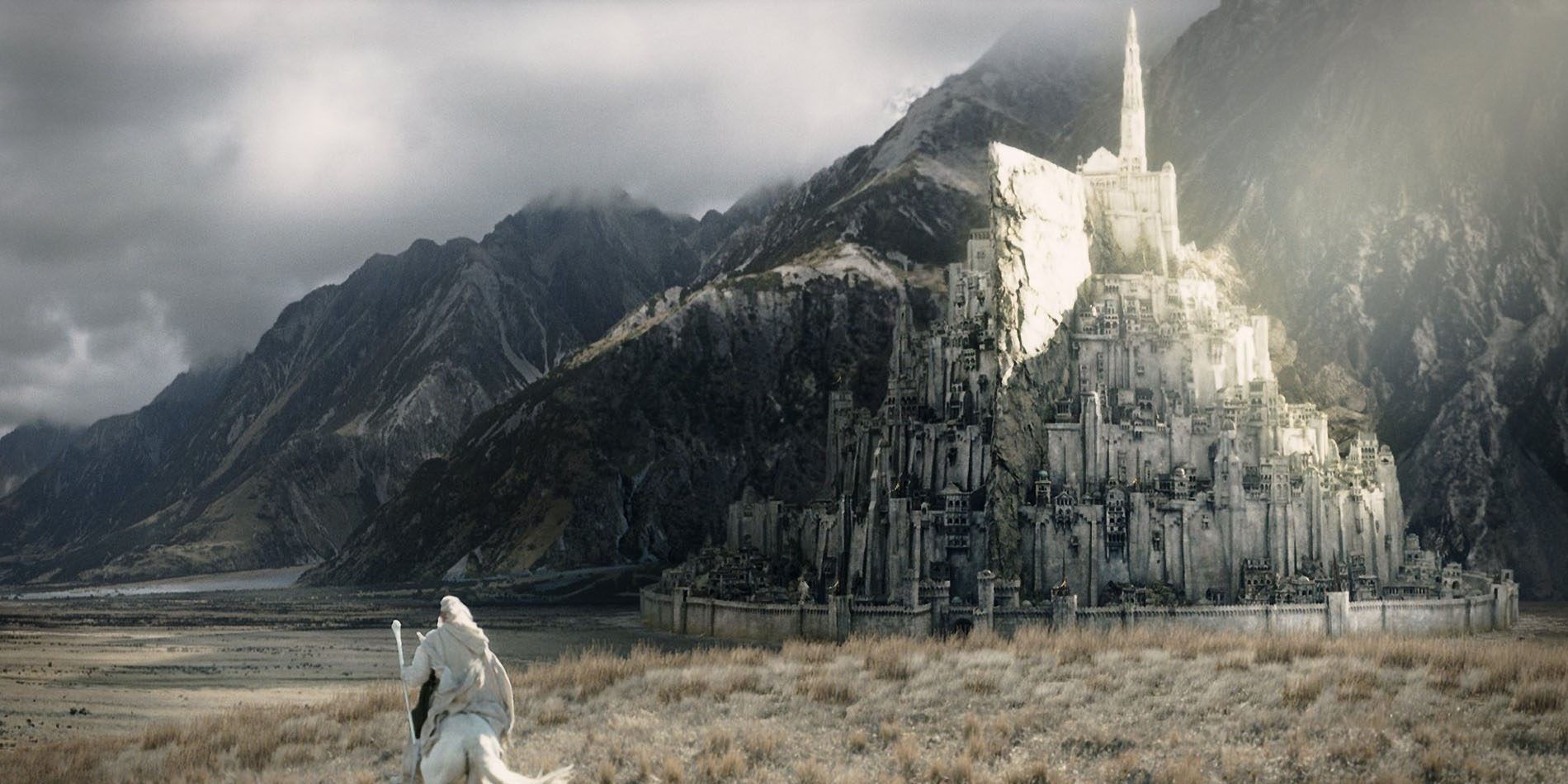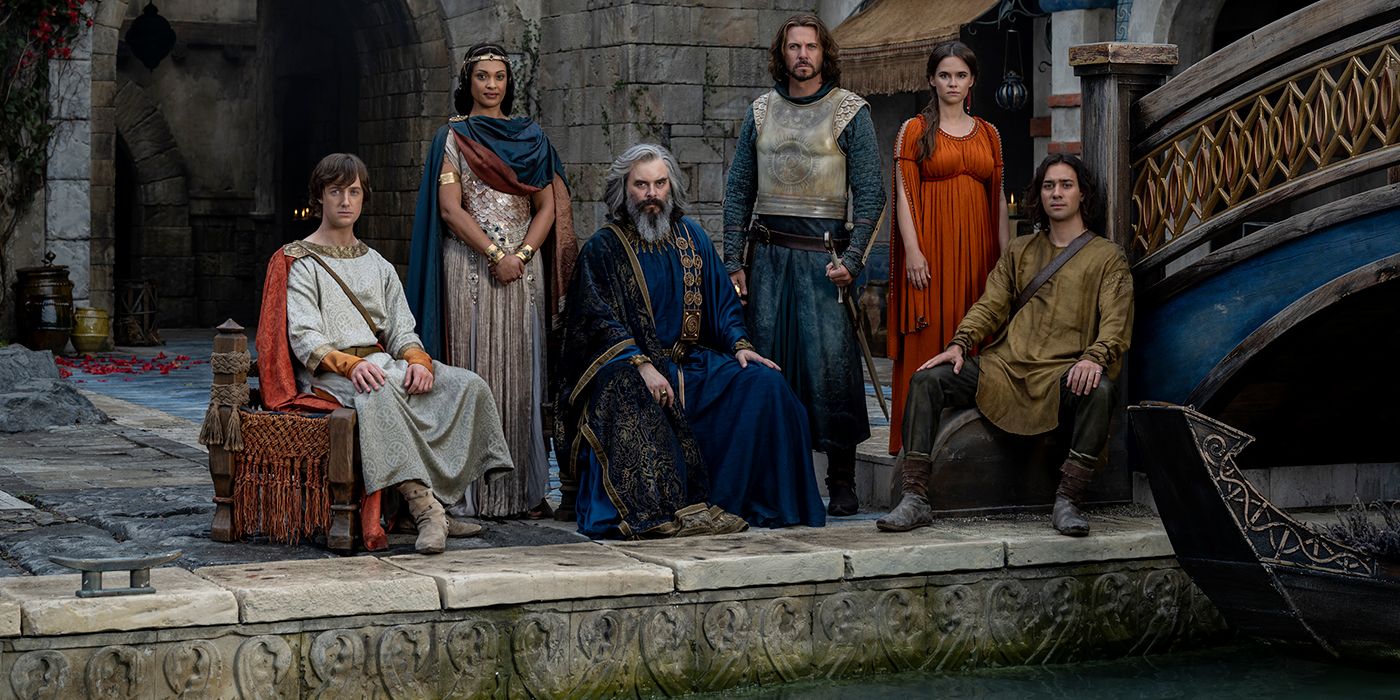The island kingdom of Númenor in The Lord of the Rings: The Rings of Power is an essential plot point in the show, and also important to the history of Middle-earth. However, since the fabled kingdom of men didn’t exist by the time of The Hobbit and The Lord of the Rings, Númenor has also become a source of intrigue for viewers unfamiliar with J.R.R. Tolkien’s books. With The Rings of Power set over during J.R.R. Tolkien’s Second Age, over 3000 years before The Lord of the Rings. This is the key reason the Númenóreans and their ancient island realm are referenced in passing during The Lord of the Rings, but don’t physically appear.
The history of Númenor is detailed in The Silmarillion, Tolkien’s Lord of the Rings appendices, and other wider writings concerning the landscape of Arda. And even though Númenor itself may not appear during Frodo’s quest and the War of the Ring, its influence is keenly felt, with decisions taken by Númenóreans in the Second Age directly influencing matters in the Third. While The Rings of Power has recreated the location fairly well, there’s plenty more about Númenor and the Númenóreans from Tolkien’s writing that will give viewers a full idea of its significance.
How Númenor Was Created, When & Who By?
Númenor Was Raised From The Sea As A Reward For The First Humans Of Middle-earth
Númenor was specifically created for the first humans of Middle-earth, and was a reward for their party in defeating the precursor to Sauron — the great evil known as Morgoth. The First Age had come to a violent end. A host led by the Valar (archangels of J.R.R. Tolkien’s mythology) personally entered Middle-earth to defeat Morgoth, the first enemy. Though the Valar were victorious, Morgoth’s dark influence and the cataclysmic battle had terraformed the landscape of Middle-earth, causing everlasting damage.
One of several native races who joined the Valar against Morgoth were the Edain — Middle-earth’s first recorded men. As reward for their loyalty (not to mention the fact Middle-earth wasn’t left in great shape), the Valar raised an island out of the ocean especially for the Edain to live on. Located between Middle-earth and the Valar’s own realm of Valinor, men gradually migrated to this star-shaped isle, and the kingdom of Númenor was officially founded there in year 32 of the Second Age under Tar-Minyatur — Elrond’s brother, who had forsaken his elven half.
What Was The Island Of Númenor Like
Compared To Gondor Or Rohan, Númenor Was A Paradise
Númenor was a large five-pointed island situated between the mainland of Middle-earth and the Western region of Valinor, the mystical paradise that’s home to the elves. In terms of its geography, Númenor resembles Middle-earth much more than it does Valinor, but it was still unique. Had Middle-earth humans from Third Age realms like Gondor and Rohan had the chance to visit the fabled island kingdom, they would likely have seen it as a near-paradise.
There were many unique plants and animals present on Númenor that couldn’t usually be found anywhere outside Valinor, as these had been gifted to the Númenóreans along with the island itself. The landscape of the island is defined by a large mountain in its center named Meneltarma, an Elvish name which translates to “Pillar of the Heavens”.
The five coastal regions of Númenor all border Meneltarma, with the land around the island itself formin the region of Mittalmar. There are multiple settlements on Númenor, with the capital city being Armenelos. Armenelos, located in the region of Arandor, was also known as the City of the Kings or Armenelos the Golden, which already lets readers know that it was an achievement of human city-building and truly a sight to behold.
The Political Structure Of Númenor
The Ancient Kingdom Hinged On Its Monarchy
The political structure of the Númenóreans was, in many ways, similar to that of Gondor prior to the Kings and Queens being replaced by Stewards. This is unsurprising, since Gondor was founded by humans from Númenor. Númenor was a monarchy, ruled over by a succession of various Kings and Queens who all descended from the first king, the half-eld Elros Tar-Minyatur.
This helped provide stability to the island, since the royal Númenoreans had a long lifespan even compared to the other long-lived inhabitants of the Númenor. Númenorean royalty lived for around 300 years compared to the standard two centuries of their kin. These longer lifespans ensured there was a stable presence on the throne for multiple decades at a time, even centuries, and so Númenor was relatively free of the succession-based political turmoil that most monarchies are plagued by.
There were 25 kings and queens throughout the history of Númenor. The last was Tar-Calion, also known as Ar-Pharazôn. While monarchy had worked well for Númenor, Tar Calion was a key reason that the island ultimately fell. His obsession with finding eternal life was a key reason the kingdom experienced the political split which, ultimately, led to Sauron’s influence spreading among the Númenoreans.
The Culture Of Númenor
Númenor Was Culturally Distinctive And The Pinnacle Of Humanity
In terms of culture, Númenor resembled Gondor most closely out of the Middle-earth kingdoms seen in The Lord of the Rings. However, the similarities are only because of the former’s importance in the history of the latter. Direct comparisons would instantly show Númenórean culture as being much grander than the battle-weary Gondorians, to the point that the average citizen of Gondor would likely consider the way of life in Númenor as borderline-indulgent and decadent.
Númenor enjoyed a peace no human kingdoms in the Third Age of Middle-earth would be able to comprehend. Without the threats of regular Orc raids or Mordor being geographically next door, the people of Númenor had more time to invest in developing their culture through art, impressive architecture, and other pursuits that living in a state of perpetually-impending war doesn’t allow for.
This was captured incredibly well by Amazon with The Rings of Power. The armor of the Númenóreans is far more aesthetic and complex, and the buildings and structures of its various locations are incredibly more grandiose than all but the upper echelons of Minas Tirith (which were ancient by the time of Lord of the Rings).
However, the people of Númenor are far from pampered or pathetic. They make for fierce warriors, and were integral to the eventual defeat of Sauron. Due to the gifts given to them by the Valar, the people of Númenor outshined the rest of humanity in almost every way, whether on or off the battlefield. This was evident in their culture, which in the simplest terms was the apex of what the men of Middle-earth could achieve.
How Númenóreans Are Different From Middle-earth Men
The Valar Rewarded The Humans Of Númenor With Many Gifts, Including Prolonged Life
Just like the land of Númenor itself, there are several unique aspects of its people, the Númenóreans, which set them apart from the humans inhabiting realms like Rohan and Gondor in the time of The Lord of the Rings. Númenor was nothing like the human settlements seen in The Lord of the Rings and The Hobbit. Human societies of Third Age Middle-earth are mostly humble, simple, rural cultures (see Edoras in Rohan), with cities such as Gondor’s Minas Tirith rare examples of more grandiose architecture and greater accomplishments.
The most advanced human culture in LotR is arguably Gondor, with the impressive city-fortress of Minas Tirith being a bustling metropolis on a scale seen nowhere else during the Third Age of Middle-earth. However, even Gondor’s mighty and visually impressive capital doesn’t quite match the majesty of Númenor. The Second Age island was a wonder to behold, more advanced in technology, rife with awe-inspiring temples and buildings, and heavily influenced by the knowledge of elves who visited from the coast of Valinor.
The Númenóreans themselves were a cut above the men who’d later populate Middle-earth. As another reward for fighting Morgoth, the Númenóreans were granted longer lives (some living up to 400 years). They became taller and stronger, and their wisdom was naturally greater by virtue of mingling with higher races. Descendants of men who didn’t help the Valar against Morgoth don’t receive such gifts and are considered less noble.
By the time T he Lord of the Rings rolls around, the entire race has been diluted compared to man’s mighty Númenórean ancestors. The Rings of Power features human characters living in both Númenor and the villages of Middle-earth, and even if the islanders aren’t oversized in Amazon’s adaptation, their higher status will likely become apparent onscreen.
Aragorn is one of the Dúnedain, and so has prolonged life. While this isn’t expanded on much in
The Lord of the Rings
movies, the Dúnedain are the remaining descendants of the Númenóreans in the Third Age, which is why Aragorn and his kin live longer than other human beings.
Which Second Age Events Númenor Was Involved In
The Númenoreans Were Key To Defeating Sauron
For the first 600 years of its existence, Númenor thrived and prospered in watery isolation, but a growing preoccupation with the art of sea-faring eventually brought the men of Númenor back to Middle-earth — the land their ancestors left behind at the dawn of the Second Age.
Initially, the Númenóreans’ arrival was celebrated by all. The visitors forged an allegiance with the elves of Middle-earth, then made contact with their human cousins, passing on knowledge and wisdom. The Rings of Power has adapted this friendly relationship between Númenor and Middle-earth’s pointy-eared population by having Galadriel visit the island to discuss an encroaching darkness.
The presence of Númenor on the shores of Middle-earth grew exponentially over the centuries, during which time Sauron infiltrated the elves by disguising himself as “Annatar,” and tricked them into crafting the Rings of Power. He then attempted to enslave Middle-earth by secretly forging the One Ring, and when his plot failed, the War Between Sauron & The Elves began in year 1693 of the Second Age.
Naturally, the elves called upon Númenor for aid, and when the fleet of reinforcements eventually arrived, Sauron was quickly beaten at the Battle of the Gwathló. This conflict stands a good chance of being adapted by Amazon’s The Rings of Power sooner or later.
The Downfall Of Númenor Explained
The Destruction Of Númenor Was A Great Victory For Sauron
The seeds of Númenor’s downfall were, in truth, sown at the very beginning. As soon as the Valar raised the island, they forbade its population from sailing west toward Valinor. And despite possessing longer lives than their kin in Middle-earth, the Númenóreans would be visited by elves who were blessed with immortality.
As Númenor helped push back Sauron, his shadow almost seemed to draw out their underlying greed. Whereas Númenóreans were once friendly toward the people of Middle-earth, they become increasingly domineering from 1700 onward, ruling over the lesser men harshly. By the time Tar-Ancalimon took the throne in year 2221 of the Second Age, a chasm had emerged in Númenórean culture — the Faithful, who still trusted the Valar and wanted to remain friendly with the elves, and the King’s Men, who were jealous of the elves and wanted rebellion against the Valar.
When Sauron tried his luck conquering Middle-earth again in the 3200s, the Númenórean forces sailed for Middle-earth to meet him. This time, however, their cause wasn’t a righteous one — Sauron’s claim as Middle-earth’s undisputed ruler had simply insulted Númenor’s king. The Dark Lord was dragged back to Númenor as a prisoner, but such was his talent for lies and manipulation, Sauron exploited the cultural split in Númenor and stoked the King’s Men’s anger.
Temples were built in honor of Morgoth, and fleets were readied for an invasion of Valinor. As punishment for their corruption, Eru Ilúvatar — the God of J.R.R. Tolkien’s world — cast Númenor into the sea, destroyed the fleet bound for Valinor, and removed Sauron’s ability to change form.
How Númenor Is Connected To Gondor
Minas Tirith Was Built By The First Númenoreans To Settle On The Mainland Of Middle-earth
When Eru Ilúvatar destroyed Númenor to punish the Númenoreans for falling sway to their own greed and the influence of The Great Deceiver, he spared those of the Faithful who hadn’t abandoned the Valar by joining Sauron. These lucky few surviving Númenoreans included Elendil and his sons Isildur and Anárion. Upon landing in Middle-earth, Elendil and sons built two kingdoms: Arnor and Gondor. Arnor would fall early in the Third Age, but Gondor was destined to endure.
Settlements like the famous Minas Tirith from The Return of the King were constructed by those who survived Númenor’s downfall, meaning Gondor’s famous White City represents the style, architecture and ambition of the destroyed island. Gondor alone carries on the spirit of Númenor in Third Age Middle-earth, and this thread of continuity is represented by the famous white tree standing at the very top of Minas Tirith.
Before Númenor was consigned to a watery doom, the king’s court contained a beautiful tree named Nimloth the Fair. Isildur secretly stole a fruit from Nimloth, and this was planted in Minas Tirith to become the White Tree of Gondor.
Which Númenóreans Are In The Rings Of Power?
Isildur And Several Other Important Characters From Númenor Are Present
Amazon’s Lord of the Rings: The Rings of Power fudges the dates of J.R.R. Tolkien’s timeline to bring his most famous Númenórean characters into the mix earlier. As such, Maxim Baldry is portraying Isildur, and Lloyd Owen plays his father, Elendil. The Rings of Power also introduces Isildur’s made-for-TV sister, Ema Horvath’s Eärien. Cynthia Addai-Robinson is Tar-Miriel, heir to the throne of Númenor, and Trystan Gravelle plays the villainous role of Ar-Pharazôn, who steals the crown for himself before ultimately succumbing to Sauron’s manipulations.
These characters wouldn’t typically appear until near the end of Tolkien’s Second Age, shortly before Númenor’s destruction. Lord of the Rings: The Rings of Power seems to deal with Sauron’s comeback and the forging of the Rings of Power, suggesting Númenor’s long history is being truncated for the purposes of television.



